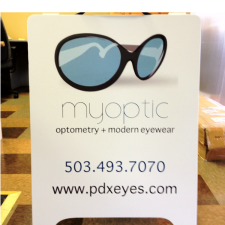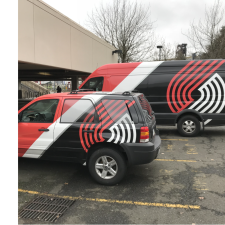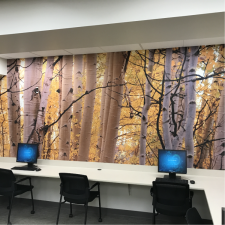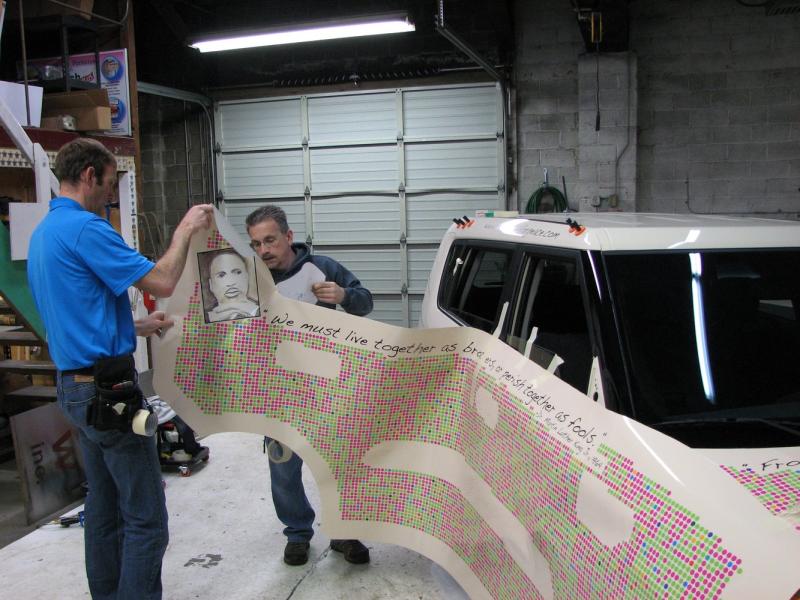
Everything You Want & Need To Know About Vehicle Wraps
Vehicle wraps are a moving advertisement for your company. Like any ad, they must be scrutinized prior to printing, to make sure that every detail is right. But the printing and installation challenges behind vehicle graphics are unique.
In a recent post about the 100 Letters for Peace Project, we discussed some things that can muddle up vehicle wraps. Portland artist and peace activist Sara Kirchenbaum hired us to turn her 100th letter for peace into a car wrap. In that post, we explained how car profile details, graphic issues, and application challenges came up in the 100 Letters for Peace wrap. Today we’re following up with a detailed look at the vehicle wrap process.
All vehicle graphics projects begin with a consultation. The client contacts us with a request to turn their graphics into a wrap. Once we understand all of the project details, it’s time to move on to the design stage. Our graphics experts translate client files for car application. We kick things off by borrowing basic measurements from car profile libraries. However, to truly match a car to a set of graphics, we must measure and photograph the vehicle in person. Mirrors, door handles, and other features can significantly impact the shape of the display surface, so we must painstakingly measure each vehicle to be sure it will match the graphic files prior to printing. We also note any rust or other damage that may limit graphic adhesiveness. Next comes production. We print the graphics on vinyl, with options for perforation, translucency, etc. After the graphics are printed out, it’s time to apply them to the car itself. Many of our installation experts have decades of experience in applying printed graphics to cars. This is no simple process; we might use magnets, tape, smoothing tools, and much more to ensure graphics are applied perfectly.
To prepare for a vehicle wrap, we recommend clients follow these tips:
- Understand that surface variations will change the visual result. For maximum visual impact, it is wise to maintain space around objects such as wheel wells, door handles, reflectors, and so forth. Critical messaging should not be placed in these areas, nor should it be within 5” of the top or bottom of the vehicle. Don’t forget that your vehicle’s hood and roof are great advertising spaces as well. These areas will get eyes from highrise buildings and traffic, so make the most of them!
- Follow file preparation guidelines. Abiding by S2 Imaging’s file preparation requests will smooth out the entire vehicle graphic creation/installation process.
- Remove doors and handles. It is likely that we remove handles, mirrors, and other elements to ensure even application. Of course, we can reassemble these parts upon completion.
- Check color matching with a proof print. To make sure that the final printed product lines up with your color expectations, check our proof against your design requirements.
Every vehicle wrap is a statement. As such, it represents a brand, organization, or person. A poorly applied wrap can drag down public opinion, while an expert vehicle graphics job can earn up to 70,000 positive impressions per day! To get the most bang for your vehicle signage bucks, it’s important to put work, careful thought, and precision into design, production, and application. You can trust S2 Imaging to create an eye-catching, perfectly installed vehicle wrap for your business, group, or family.


